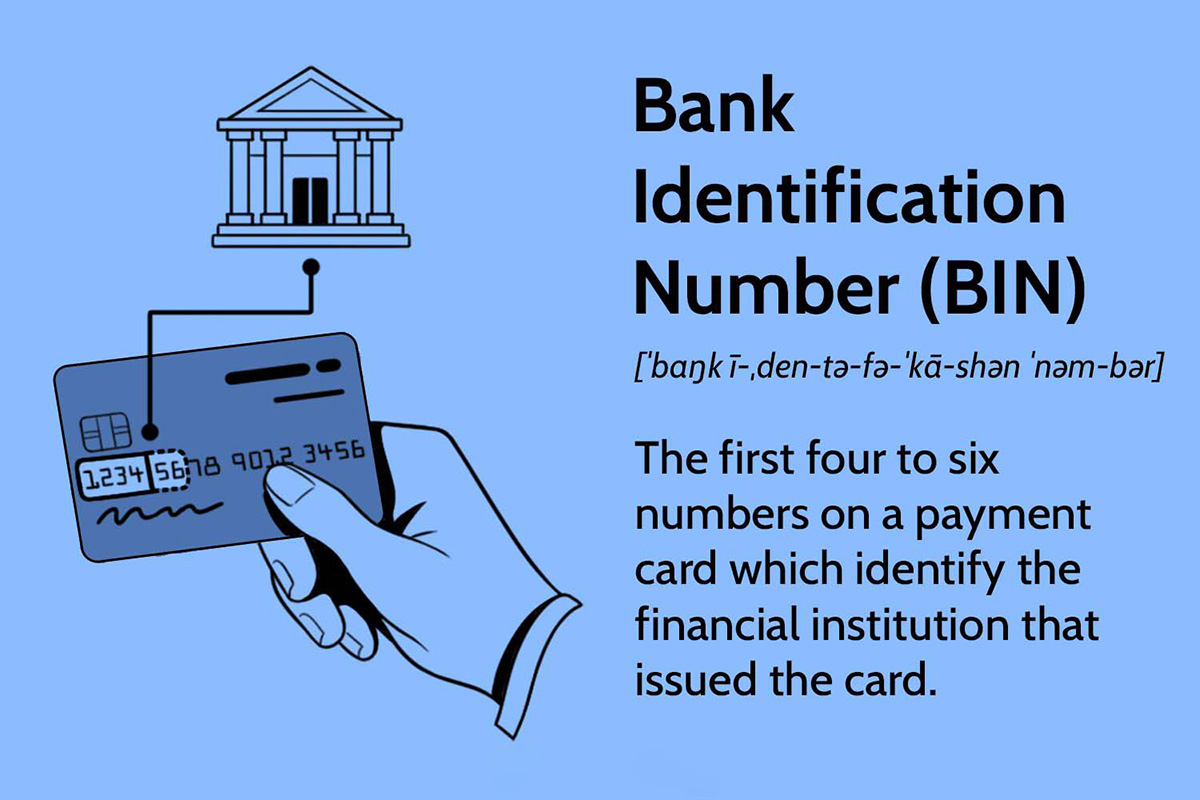

Finance
What Is Front Running In Stocks
Published: January 18, 2024
Learn what front running is in stocks and how it affects the finance industry. Gain insights into this controversial practice and its implications.
(Many of the links in this article redirect to a specific reviewed product. Your purchase of these products through affiliate links helps to generate commission for LiveWell, at no extra cost. Learn more)
Table of Contents
Introduction
Welcome to our comprehensive guide on front running in stocks. In the world of finance, front running has been a topic of concern for both investors and regulators. It refers to a practice where individuals or entities take advantage of non-public information to make trades that benefit their positions. This unethical behavior can have a significant impact on the integrity of financial markets and can lead to unfair advantages for those involved.
Front running can occur in various financial markets, including stocks, bonds, commodities, and derivatives, but for the purpose of this article, we will focus on front running in the stock market. Understanding the concept of front running is crucial for investors and traders alike, as it helps identify potential manipulative practices.
In this article, we will delve into the definition of front running, how it works, examples of front running in stocks, its impact on the market, regulatory measures to prevent it, and ways to identify and report front running. By the end of this guide, you will have a better understanding of this unethical practice and the steps taken to protect the integrity and fairness of the financial markets.
Definition of Front Running
Front running refers to the act of executing trades based on non-public information before a large order is executed on behalf of a client or institution. It involves taking advantage of advance knowledge of pending orders to profit from price movements that are expected to occur as a result of those orders.
Front running can occur in several ways. One common scenario is when a broker or trader uses insider information to place their own trades before executing the trades for their clients. This allows them to profit from the anticipated movement in the market caused by the client’s order.
Another form of front running involves traders who have access to order flow information. These traders can monitor the incoming orders and take positions ahead of those orders, either by buying or selling securities to benefit from the expected price movement. This practice is often referred to as “order anticipation.”
Front running is considered unethical and illegal in most jurisdictions. It undermines the principle of fair and equal access to information and trading opportunities in financial markets. It gives individuals or entities with advance knowledge an unfair advantage over other market participants, who do not have access to the same information.
It’s important to distinguish front running from legitimate market-making activities. Market makers provide liquidity to the market by offering to buy or sell securities at quoted bid and ask prices. They are expected to execute their own trades based on the current market conditions, not on the knowledge of forthcoming customer trades.
Overall, front running is a deceptive practice that erodes the trust and integrity of financial markets. Regulatory bodies and exchanges have implemented measures to detect and prevent front running, ensuring a level playing field for all participants and maintaining market transparency.
How Front Running Works
Front running operates on the principle of exploiting non-public information to gain an unfair advantage in the market. The process typically involves individuals or entities with access to confidential information executing trades before the public has knowledge of the impending transaction.
Here is a step-by-step breakdown of how front running works:
- Gaining advance knowledge: The front runner, who may be a broker, trader, or employee of a financial institution, obtains inside information about an impending large trade or order from a client or institution. This information is typically not shared with the general public and gives the front runner an advantage.
- Analysis of the market: The front runner analyzes the market conditions and anticipates how the impending trade will impact the prices of the securities involved. They consider factors such as supply and demand dynamics, liquidity, and potential market reactions.
- Execution of personal trades: Armed with the non-public information, the front runner executes their own trades in the same securities or related instruments before the client’s trade is executed. They aim to profit from the anticipated price movement resulting from the client’s trade.
- Profit realization: Once the client’s trade is executed and the market reacts to it, the front runner can realize profits by selling their securities at a higher price or covering their short positions at a lower price. The front runner takes advantage of the price discrepancy caused by the client’s trade.
It’s important to note that front running is not only limited to individual traders. It can also occur within financial institutions, where employees misuse confidential information and trade on their own accounts or provide the information to others for personal gain.
Front running can be facilitated through various means, including electronic trading systems, high-frequency trading algorithms, and even through personal relationships with market participants or insiders who disclose confidential information.
Overall, front running relies on the exploitation of privileged information to gain an unfair advantage. It undermines the level playing field in financial markets and is widely considered unethical and illegal.
Examples of Front Running in Stocks
Front running in the stock market has historically been a concern due to its potential to manipulate prices and exploit non-public information. Here are a few notable examples of front running:
- Insider Front Running: One of the most infamous cases of front running occurred in the early 2000s when Martha Stewart, the American businesswoman, was convicted of insider trading. She sold her shares in a biotech company, ImClone Systems, just a day before negative information about the company was made public. By selling her shares before the news became known to the market, she avoided significant losses.
- Broker Front Running: In 2019, a brokerage firm faced scrutiny for alleged front running activities. The firm’s employees were accused of using their role as brokers to execute trades on personal accounts ahead of large orders from clients. By taking positions before the client trades were executed, they potentially profited from the price movements caused by those orders.
- Front Running through High-Frequency Trading (HFT): High-frequency trading is a strategy employed by some firms that relies on rapidly executing trades based on algorithmic models. In some cases, HFT firms have been accused of front running by using their sophisticated technology to identify incoming large orders and trade ahead of them, thereby benefiting from the resulting price movements.
- Front Running Mutual Funds: Mutual fund front running occurs when insiders or traders front run trades made by mutual funds. For example, if a mutual fund manager discloses the fund’s intention to make a large purchase of a particular stock, traders may execute their own trades ahead of the mutual fund, artificially driving up the stock’s price to their advantage.
These are just a few examples of front running in stocks, highlighting the various ways in which this unethical practice can be carried out. These cases underscore the importance of regulatory vigilance and the need for investors to be cautious and aware of potential front running activities in the market.
Impact of Front Running on the Market
The impact of front running on the market can be far-reaching and detrimental to the integrity and fairness of the financial system. Here are some key impacts of front running:
- Market Distortion: Front running can distort market prices and create artificial volatility. By executing trades based on non-public information, front runners can manipulate the supply and demand dynamics, leading to price movements that do not reflect the true fundamentals of the securities being traded. This can mislead other market participants and create an uneven playing field.
- Reduced Investor Confidence: When investors perceive that the financial markets are not fair or transparent, they may lose confidence and become hesitant to participate. Front running erodes trust in the system, causing investors to question the legitimacy of price movements and market efficiency. This can have a negative impact on trading volumes and market liquidity.
- Unfair Advantages: Front running gives those with access to non-public information an unfair advantage over other market participants who do not possess the same information. This undermines the principle of fair competition and equal opportunities for all investors. It can discourage small investors and lead to a concentration of power among a few entities or individuals.
- Market Manipulation: Front running can be used as a tool for market manipulation. By strategically executing trades ahead of large orders, front runners can create artificial price movements and profit from the subsequent price changes. This can mislead other market participants and contribute to market manipulation and instability.
- Diminished Market Efficiency: The presence of front running disrupts the efficient allocation of resources in the market. It interferes with the price discovery process and distorts the natural flow of supply and demand. This can lead to inefficient resource allocation and hinder the overall functioning of the market.
Overall, front running negatively impacts the market by distorting prices, reducing investor confidence, creating unfair advantages, contributing to market manipulation, and diminishing market efficiency. Regulatory authorities and exchanges play a crucial role in detecting and deterring front running activities to safeguard the integrity and fairness of the financial markets.
Regulatory Measures to Prevent Front Running
Regulatory authorities and exchanges around the world have implemented various measures to detect and prevent front running in order to uphold market integrity and protect investors. These measures typically aim to enhance transparency, enforce strict rules, and deter individuals or entities from engaging in front running practices. Here are some key regulatory measures:
- Insider Trading Laws: Insider trading regulations prohibit the use of material non-public information to gain an unfair advantage in trading. These laws require individuals with access to confidential information to maintain strict confidentiality and prevent them from trading on that information or sharing it with others who may engage in front running.
- Market Surveillance and Monitoring: Regulatory authorities employ sophisticated surveillance and monitoring systems to detect patterns and unusual trading activities that may indicate front running. These systems analyze trading data, order flow, and other relevant information to identify potential instances of front running and take appropriate actions.
- Strict Code of Conduct: Financial institutions, brokers, and professionals in the industry are required to adhere to a strict code of conduct that prohibits engaging in front running practices. They must act in the best interest of their clients and avoid conflicts of interest that may lead to front running.
- Transaction Reporting Requirements: Market participants are often required to report their transactions in a timely and accurate manner. This helps regulatory authorities monitor trading activities and identify any potential front running. The reporting requirements serve as a deterrent and aid in the detection of suspicious trading activities.
- Whistleblower Programs: To encourage the reporting of front running and other illegal activities, regulatory bodies often have whistleblower programs in place. These programs provide protections and incentives for individuals to come forward with information regarding front running practices, allowing for effective enforcement actions.
- Enforcement Actions and Penalties: Regulatory authorities have the power to impose significant fines, penalties, and even criminal charges on individuals or entities found guilty of front running. These enforcement actions serve as a deterrent to both individuals and institutions, aiming to discourage the practice and maintain market fairness.
It is worth noting that the specific regulatory measures vary from jurisdiction to jurisdiction. However, the goal remains consistent – to prevent front running, protect investors, and promote fair and transparent markets.
Ways to Identify and Report Front Running
Identifying and reporting front running is crucial to maintaining the integrity of the financial markets and protecting investors from unfair practices. Here are some ways to identify and report front running:
- Monitor Market Activity: Watch for suspicious trading patterns or large price movements that seem to precede public announcements or known trades. Unusual price volatility or sudden spikes in trading volume can be signs of front running.
- Stay Informed: Keep track of news and announcements related to the securities you’re trading. Any non-public information that is disseminated or leaked can potentially lead to front running. Stay alert to any irregularities in the market.
- Utilize Technology: Use advanced trading platforms and tools that offer monitoring and analysis capabilities. These platforms can help detect patterns in trading activities and identify potential front-running activities.
- Document Evidence: Keep records of any suspicious trades or activities that suggest front running. Document the dates, times, parties involved, and any other relevant details. This evidence can be crucial when reporting the incident to regulatory authorities.
- Report to Regulatory Authorities: If you suspect front running, report your concerns to the appropriate regulatory authorities in your jurisdiction. Provide them with the evidence you have gathered and any relevant information that can aid in their investigation.
- Whistleblower Programs: Take advantage of whistleblower programs offered by regulatory bodies. These programs provide protections and incentives for individuals to come forward with information about front running and other illegal activities.
- Seek Legal Advice: Consult with legal professionals who specialize in securities law and market manipulation. They can guide you on the proper steps to take and help ensure that your concerns are addressed appropriately.
It’s important to remember that front running is an illegal and unethical practice, and reporting it contributes to upholding market integrity. By being vigilant and proactive, investors can play a role in maintaining fair and transparent financial markets.
Conclusion
Front running in stocks is a deceptive practice that undermines the fairness and integrity of financial markets. By taking advantage of non-public information, individuals or entities can manipulate prices, gain unfair advantages, and distort market dynamics. However, regulatory authorities and exchanges have implemented measures to detect, prevent, and punish front running activities.
Through strict regulations, market surveillance, transaction reporting requirements, and enforcement actions, regulatory bodies aim to protect investors and maintain a level playing field for all market participants. Insider trading laws and whistleblower programs further contribute to identifying and addressing front running practices.
As market participants, it is crucial for us to be aware of front running and its impact on the market. By staying informed, utilizing technology, monitoring market activity, and documenting any suspicious trades, we can play a role in identifying potential front running activities. Reporting such activities to regulatory authorities not only helps combat this unethical practice but also fosters transparency and fairness in the financial system.
Ultimately, the fight against front running requires a collective effort from regulators, market participants, and individual investors. By promoting transparency, ethical conduct, and timely reporting, we can contribute to safeguarding the integrity of financial markets and protecting the interests of all investors.














